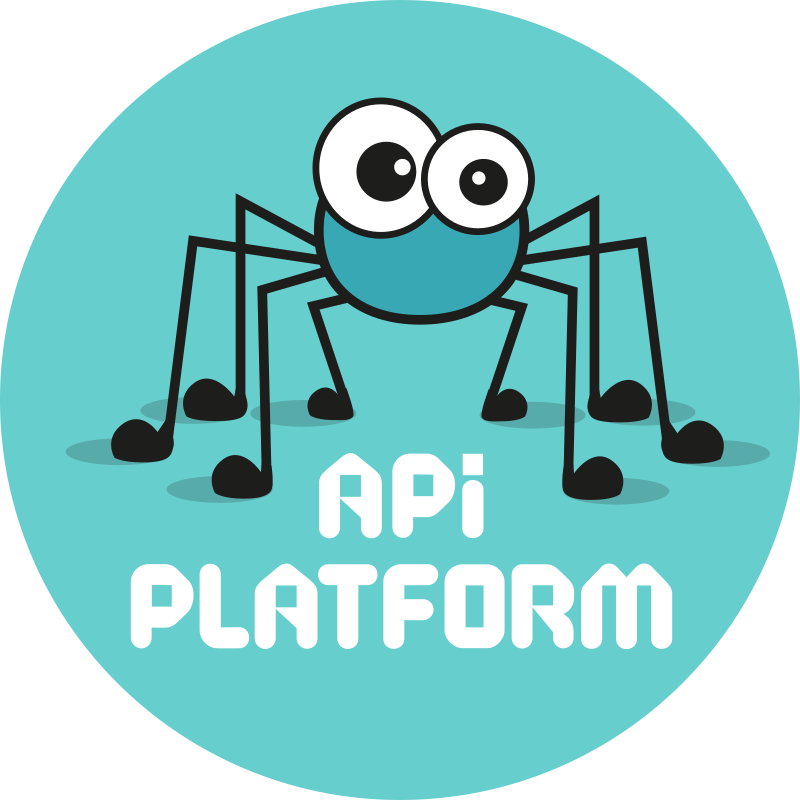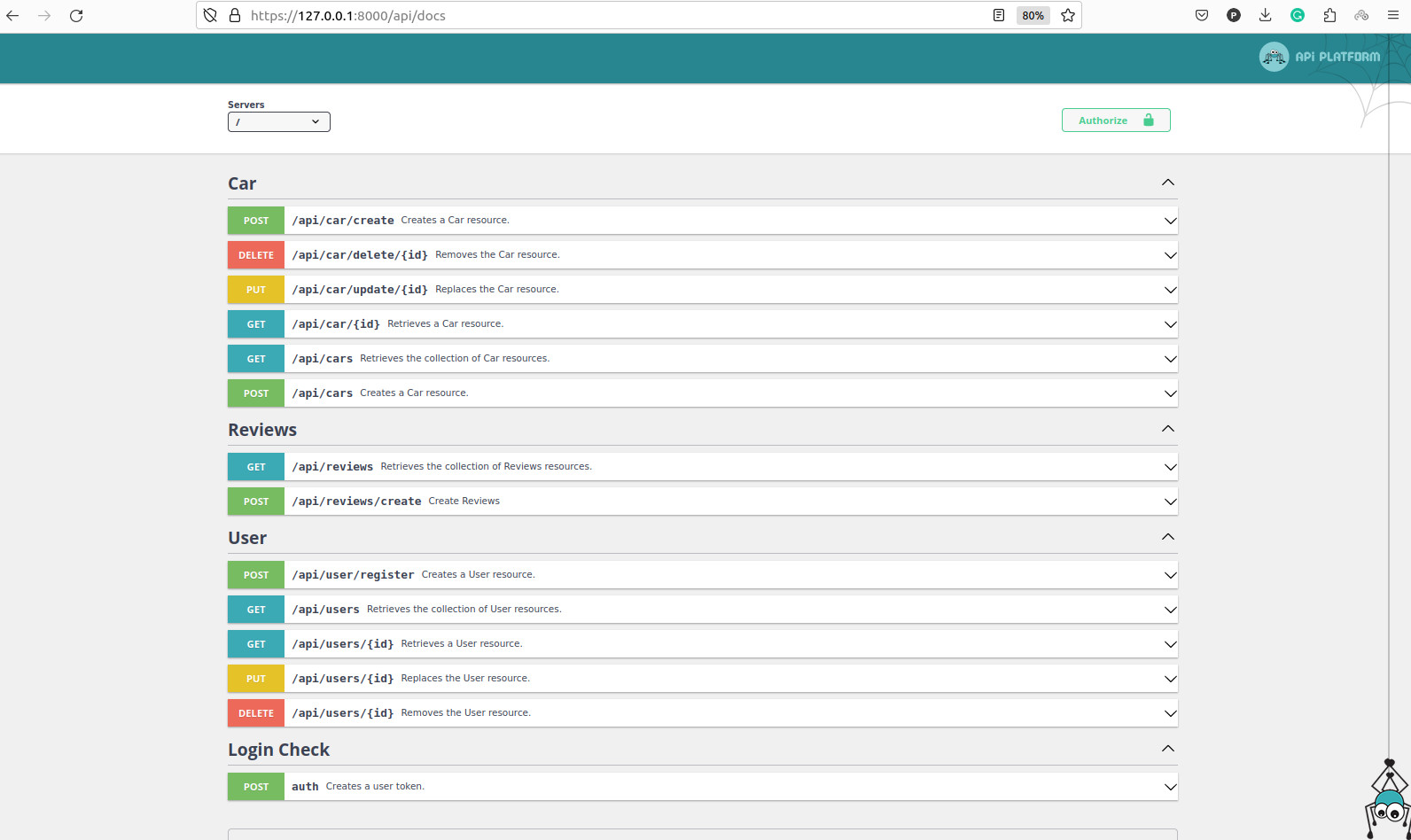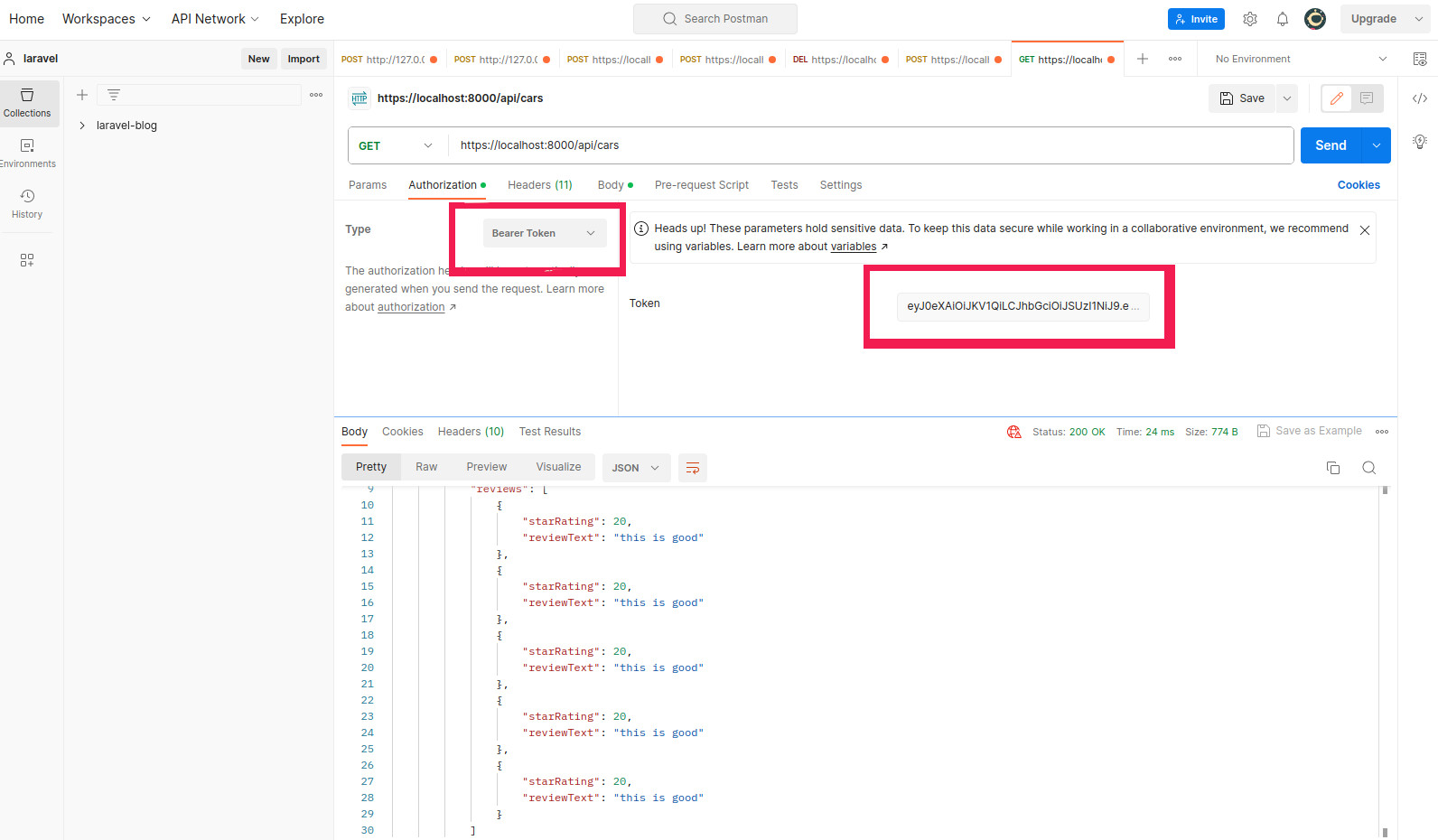This is a simple RESTful API that allows you to create, read, update, and delete cars and their reviews. You can also fetch five latest reviews of a given car with a rating above 6 stars.
- Create the Car entity with the following fields: brand, model, and color.
- Create the Reviews entity with the following fields: star rating (from 1 to 10) and review text.
- Implement a simple RESTful API using Symfony 6 and API Platform 3.
- Utilize PostgreSQL DB as the database.
- Use PHP 8 as the programming language.
- Create a dockerized environment for the app.
###1-Symfony Or Composer Optionally, you can also install Symfony CLI. This creates a binary called symfony that provides all the tools you need to develop and run your Symfony application locally.
The symfony binary also provides a tool to check if your computer meets all requirements. Open your console terminal and run this command:
symfony check:requirements
####1-1-Open your console terminal and run any of these commands to create a new Symfony application:
symfony new my_project_directory --version="6.3.*"
####1-2 If you're not using the Symfony binary, run these commands to create the new Symfony application using Composer
composer create-project symfony/skeleton:"6.3.*" my_project_directory
cd my_project_directory
composer require api
####1-3 server star
symfont serve:run -d
2- Api platform Getting started
###2- Docker To run this application, you need to have Docker and Docker Compose installed on your machine. Then, follow these steps:
- Clone this repository to your local machine.
- Copy the
.envfile to.env.localand modify the environment variables according to your needs. - Run
docker-compose up -dto build and start the containers. - Run
docker-compose exec app php bin/console doctrine:migrations:migrateto create the database schema. - Run
docker-compose exec app php bin/console doctrine:fixtures:loadto load some sample data (optional).
##Usage You can access the API documentation at http://localhost/docs. You can also use tools like Postman or curl to test the endpoints.
##Authentication
To use the API endpoints, you need to have a valid token. To get a token, you need to register a user and then authenticate with the user credentials.
###1:Register a user
To register a user, you need to send a POST request to /api/user/register with the following JSON body:
{
"email": "user@example.com",
"plainPassword": "123"
}
The response will be a JSON object with the user id and email.
###1-2:Authenticate a user
To authenticate a user, you need to send a POST request to https://localhost:8000/auth with the following JSON body:
{
"email": "user@example.com",
"password": "string"
}
The response will be a JSON object with the token and its expiration time.
###1-3: Use the token
To use the token, you need to add it as a Bearer token in the Authorization header of your requests. For example, if you want to use Postman, you can do the following:
- In the Authorization tab, select Bearer Token as the type.
- Paste the token in the Token field.
- Send your request to the desired endpoint.
###Here are some examples of requests and responses:
curl http://localhost/api/cars
[
{
"brand": "strssing",
"model": "string",
"color": "string",
"reviews": [
{
"starRating": 12,
"reviewText": "string"
}
]
},
{
"brand": "strssing",
"model": "string",
"color": "string",
"reviews": []
},
{
"brand": "strssing",
"model": "string",
"color": "string",
"reviews": []
},
{
"brand": "string",
"model": "string",
"color": "string",
"reviews": [
{
"starRating": 10,
"reviewText": "string"
},
{
"starRating": 7,
"reviewText": "string"
}
]
}
]
curl http://localhost/api/cars/1
{
"brand": "strssing",
"model": "string",
"color": "string",
"reviews": [
{
"starRating": 2,
"reviewText": "string"
}
]
}



